Cleveland Bay
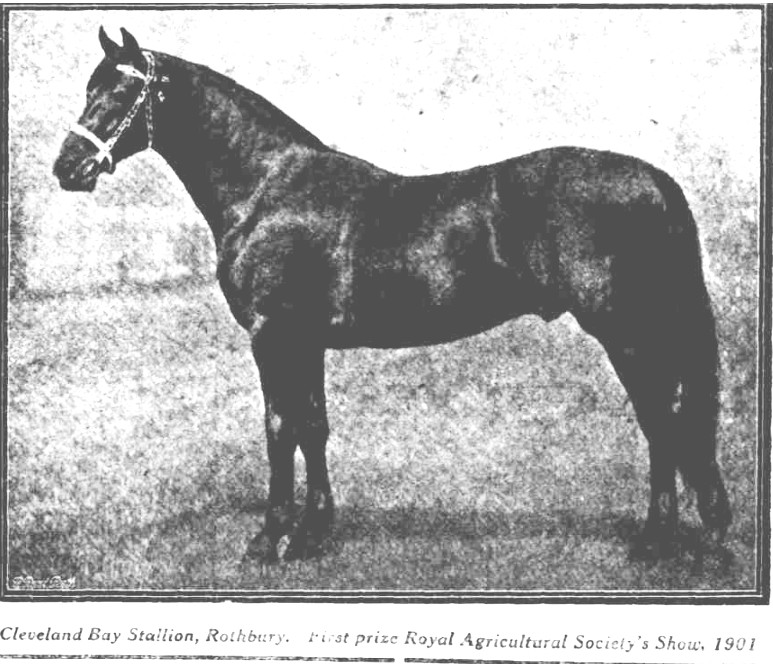
Background Breeds
Janet Lane on Waler Data Base @ Facebook. Image: Sunday Times, Perth, Sunday 26 May 1912.
Cleveland Bay – an important background breed of the Waler. Now the rarest horse breed in the world – facing extinction – this handsome, superlative horse breed was once highly popular in Australia.
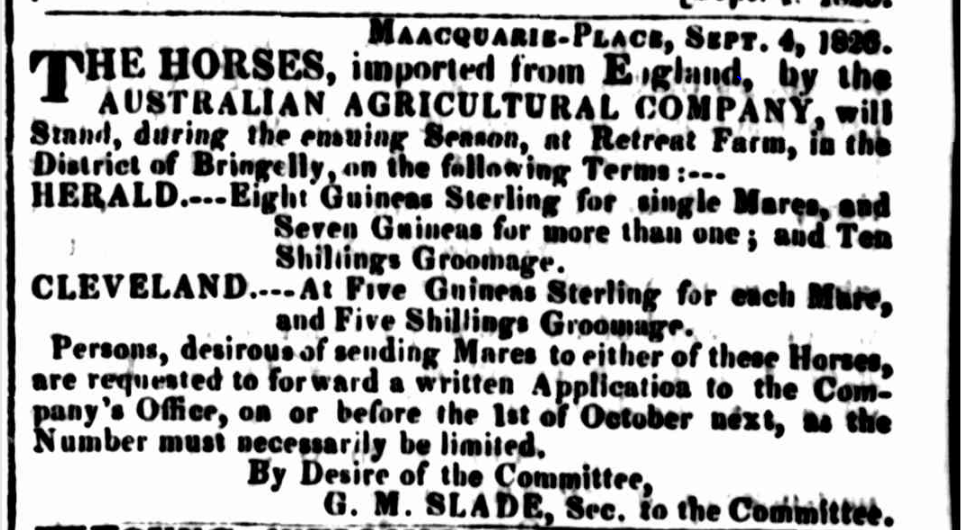
Note – many horses of the breed were named Cleveland back then. In 1830, this company listed 19 pure imported Cleveland Bays among its horses, and 9 bred on here. And, over 100 horses bred from these, called “colonials.”
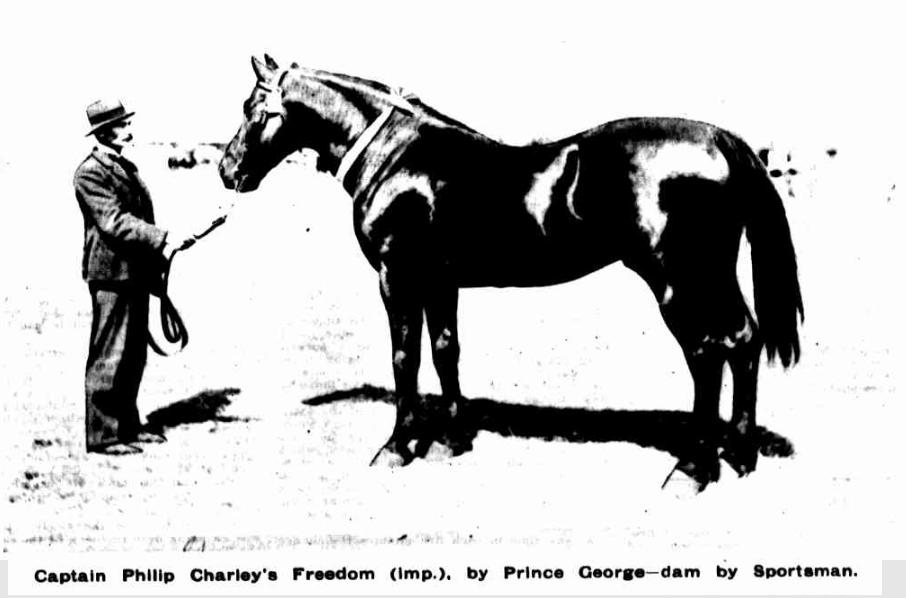
Australian Town and Country Journal, Sydney, Wednesday 23 September 1903. Freedom was a much admired horse and always had a full book of mares. He was a coaching stallion, his breeding almost all Cleveland Bay.
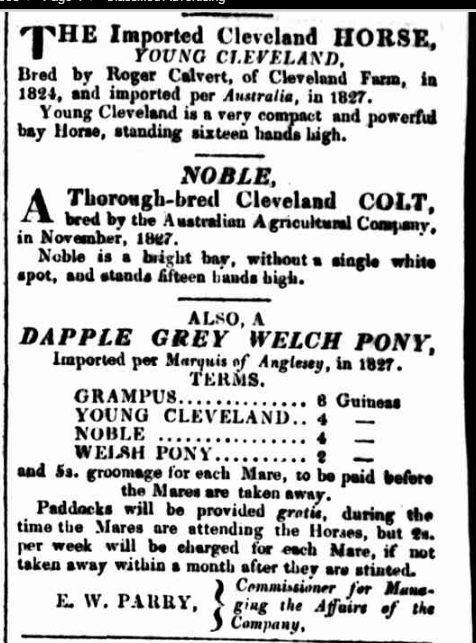
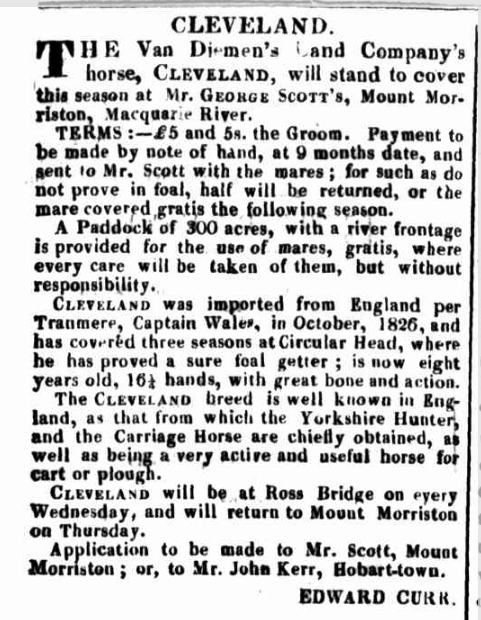
Originally from the North Riding of Yorkshire, Cleveland area, a great horse breeding area. Known by origin, colour, type and name (usually called Clevelands early on) by the mid 1600’s. Widely used as pack-horses before roads were improved for wheeled transport. Over the ages, adapted for heavy coach work – the ‘encumbrances’ of the middle ages – to lighter coach work, light agricultural use, stylish carriage horses and riding horses. Probably at their peak in Regency days when the cut of your horse was everything and ladies almost always rode a bay and had them to carriage, it being the height of good taste to have bays; never seen as vulgar. Uses dictated their type – heavier, lighter, more showy action all took a turn.

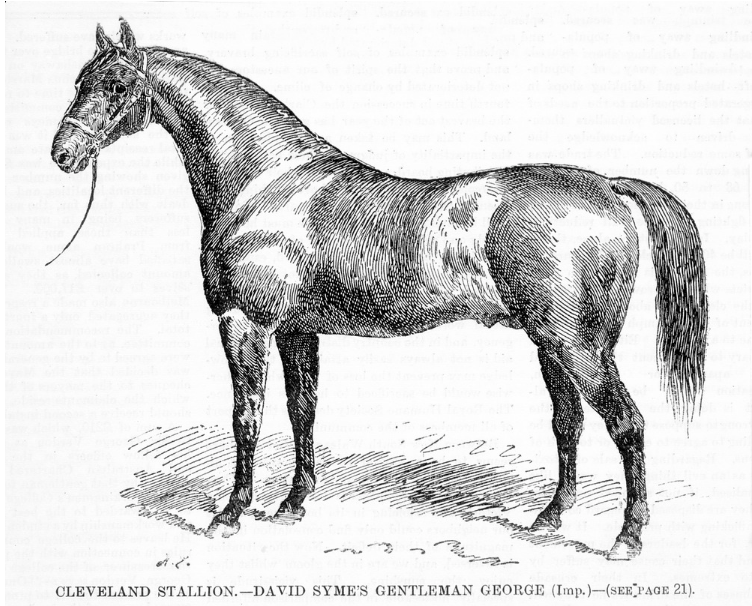
‘Mr. Philip Charley’s Cleveland Bay stallion.’
Critic, Adelaide, Wednesday 18 September 1907
Charley imported several Cleveland Bays and Roadsters; in fact his best Roadsters consisted of a lot of Cleveland Bay. He bred horses for the India trade and for utility horses here. His horses were top quality; money was no object with Philip Charley.
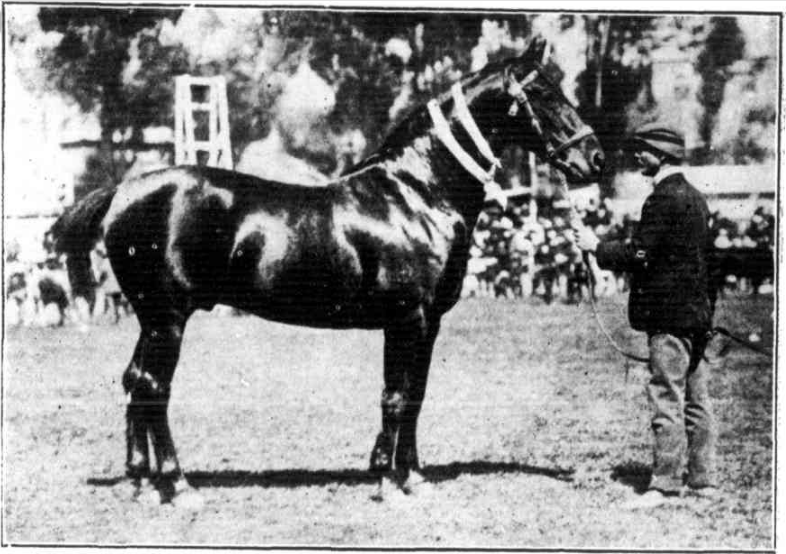
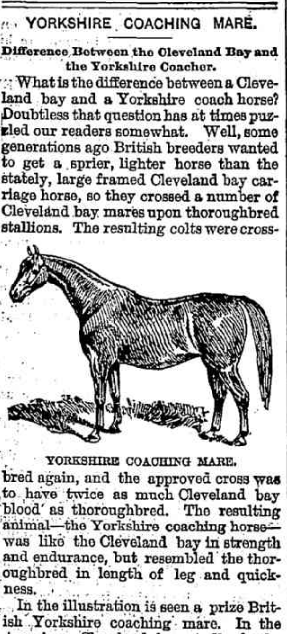
Ovens and Murray Advertiser, Beechworth, Vic., Saturday 11 November 1893
Cleveland Bays were extensively used from our earliest days to breed horses for within Australia, and for the massive export trade. Their blood went into the Roadster, Hackney, Thoroughbred, Yorkshire Coach Horse, Standardbred and other breeds.
A good big upstanding horse, generally 16 hh and up; all bay, with tremendous bone – in colonial days measuring 10 inches usually. Clean legs. Lovely strong noble head, often a little Roman-nosed. Usually no white; sometimes a bit was seen before the studbook was formed, in 1883 in the UK, and 1975 in Australia. Athletic. Good-natured. Versatile.
The Yorkshire Coach Horse, now extinct, was considered a breed once, developed from a Cleveland Bay crossed to a Thoroughbred, then back to a Cleveland Bay.
Breeds go extinct fast.
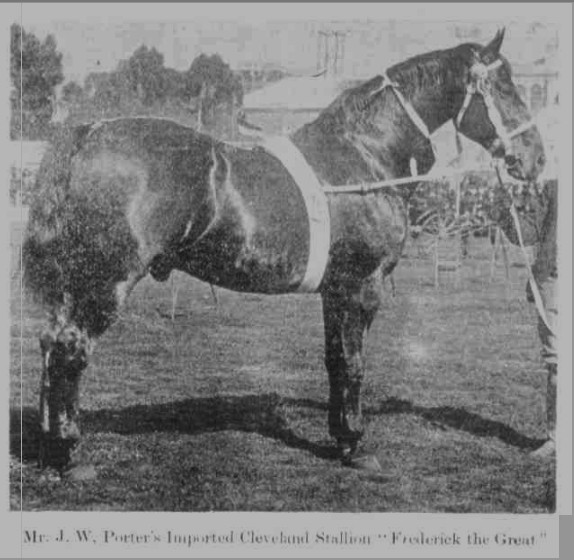
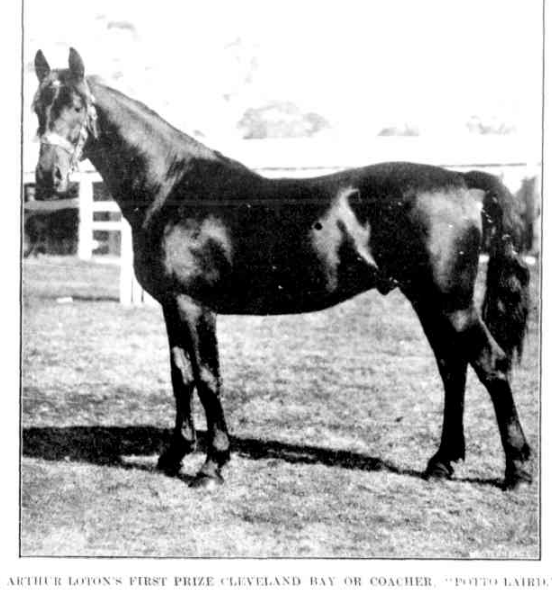
By the 1960’s they were out of fashion – horses were no longer used for work and people were only just starting to use them for sport, and often making, shall we say, ‘fashionable’ choices. The Queen, Elizabeth II, set about to save this breed, native to her land, and did this almost single-handedly. Her father King George had a lovely team of Cleveland Bays. Prince Philip also took up driving them, helping them regain popularity and showing their abilities superbly.
They were here in the 1820’s; possibly came even earlier. The Australian Agricultural Company imported many early on. A magnificent breed. Their use for breeding Walers dropped off heavily from 1902 (after the Boer War), when Banjo Patterson churned out articles on how to breed military horses – being a Thoroughbred man, his loathing of coachers, Roadsters and Clevelands influenced many. He did much harm in his pursuit of personal fame.
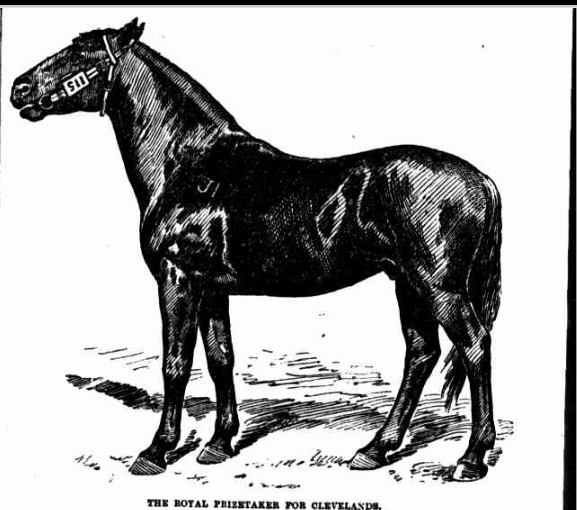
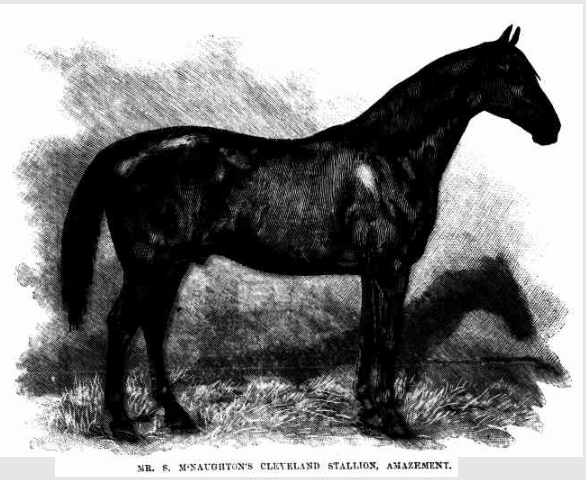
A good Waler looks more like a Cleveland Bay than any other breed. You can help support them from becoming extinct by supporting their breed organisation. One of the world’s great breeds, considered by many as the oldest horse breed of all. Certainly the oldest documented, having lineages traced back to the 1600’s. Not many photos in archives sorry; these are all newspaper pics.